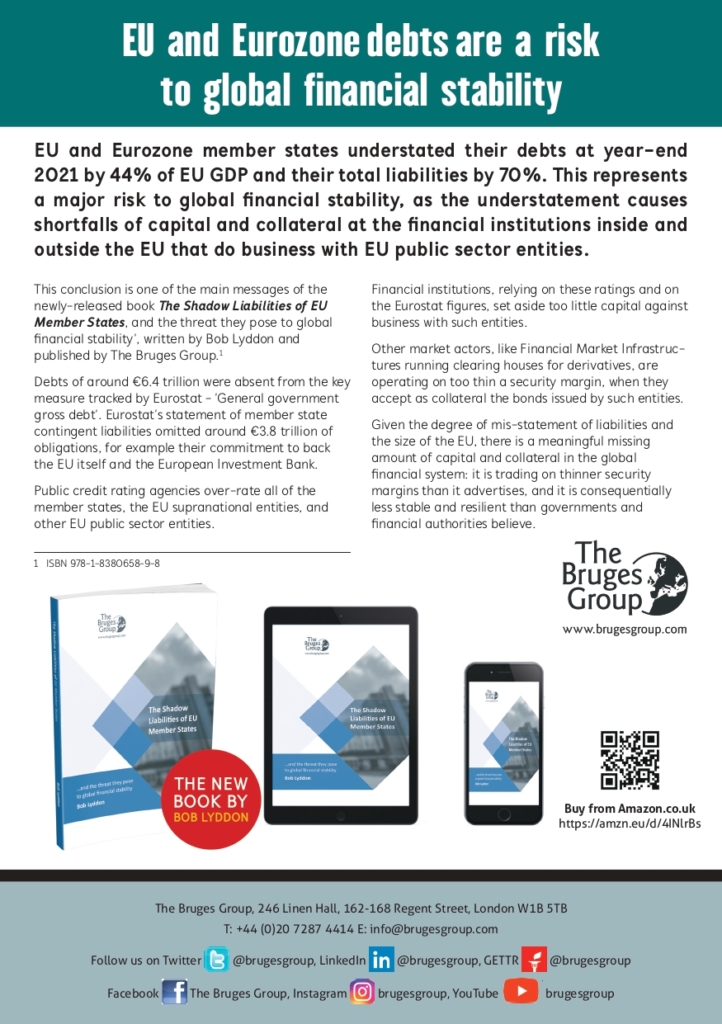Published on 13th April 2023
EU and Eurozone member states understated their debts at the end of 2021 by 44% of EU GDP and their total liabilities by 70%. This represents a major risk to global financial stability, as the understatement causes shortfalls of capital and collateral at the financial institutions that do business with EU public sector entities, who are to be found inside and outside the EU.
This conclusion is one of the main messages of the newly-released book ‘The shadow liabilities of EU Member States, and the threat they pose to global financial stability’, written by Bob Lyddon and published by The Bruges Group.[1]
Debts of around €6.4 trillion failed to be registered in the key measure tracked by Eurostat – ‘General government gross debt’. Eurostat’s statement of member state contingent liabilities was woefully adrift: they amounted to around €3.8 trillion and represented member states’ obligations to back the EU itself, other EU supranational entities, and – for Eurozone members – the European Central Bank.
Eurostat’s statistics are thereby rendered unreliable, although public credit rating agencies and financial institutions rely on them.
Public credit rating agencies rely on them to define the ratings they give to the debts of the member states, the EU supranational entities, and to other EU public sector entities, and they influence the ratings assigned to private organizations in the same country.
Financial institutions rely on these ratings, and on the Eurostat figures, to calculate the amount of capital to hold against business with such entities.
Other market actors, like Financial Market Infrastructures running clearing houses for derivatives, rely on them to define the types of collateral they will accept and the valuation to put on that collateral: the term ‘haircut’ means the difference between the current value of a piece of collateral and the maximum that can be borrowed against it. The higher the presumed quality of the collateral, the lower the ‘haircut’ will be, and the more can be lent against it, with a consequentially thinner safety margin.
The upshot is that this understatement by a major set of participants in the global financial system of their liabilities leads on to the public credit rating agencies over-rating the respective entities’ debts, and in turn to other participants in the system setting aside too little capital or demanding too little collateral to account for the risks they are running by doing business with these entities.
With the understatement being so significant as a percentage of GDP and the EU and Eurozone representing such a large portion of the global economy, the missing amount of capital and collateral will be most meaningful. This means that the global financial system is trading on much thinner margins (or loss-absorption) cushions than it believes. In other words, this issue is a threat to global financial stability.
[1] ISBN 978-1-8380658-9-8

